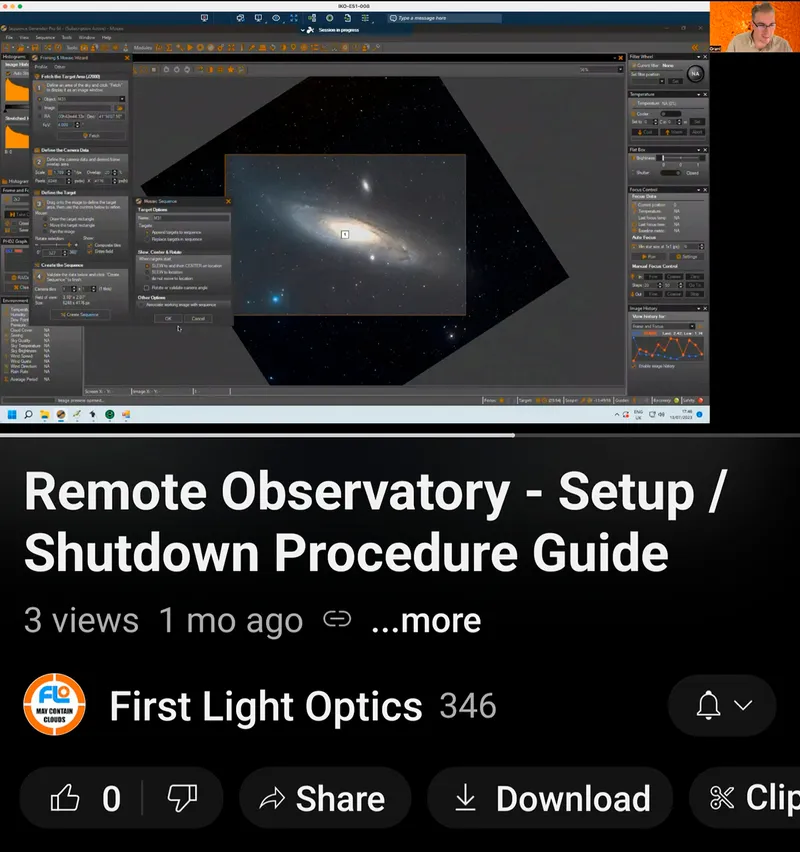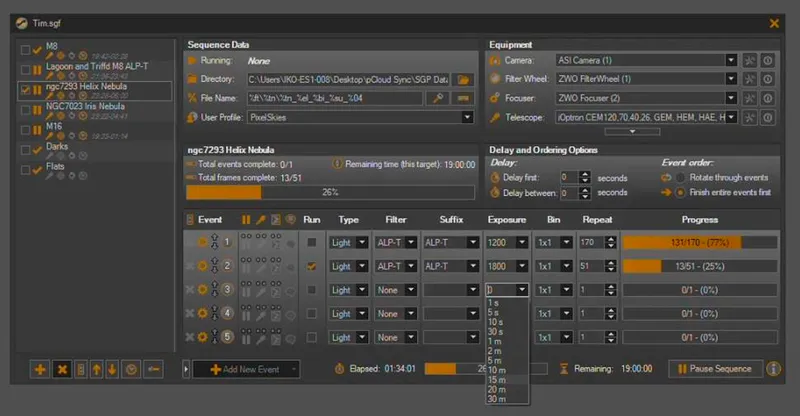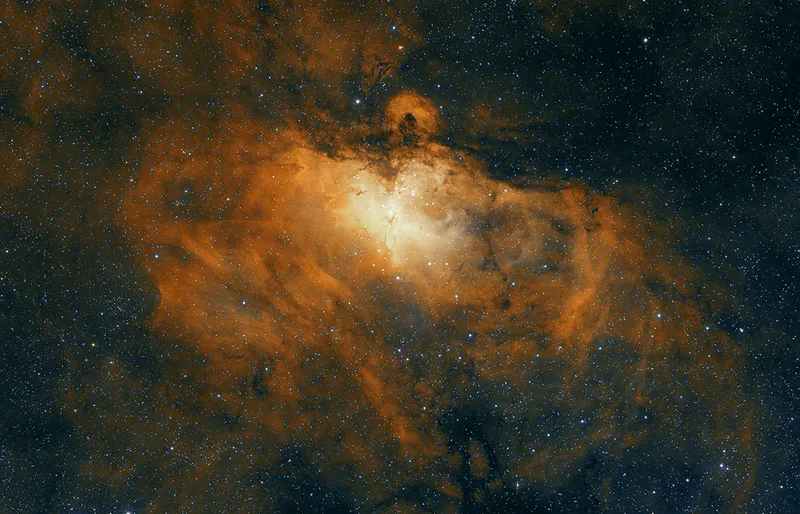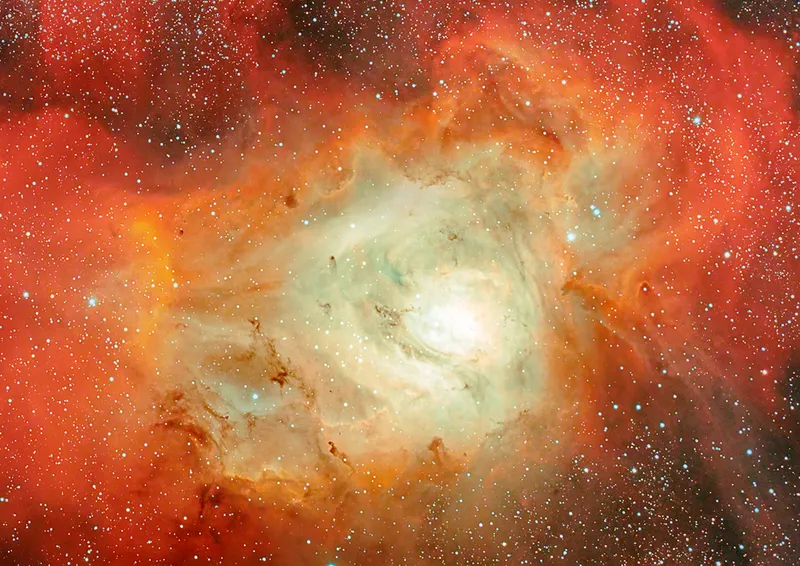Rather than a piece of astronomy equipment, here we’re reviewing the new Remote Observatory package from First Light Optics (FLO).
This remote observatory offers subscribers the chance to directly control an observatory and take their own astrophotos using familiar software and equipment typical of a decent home setup.
The observatory is situated in Granada, southern Spain, within the excellent PixelSkies complex

Although sited in a regio with superb crystal-clear skies unblighted by light pollution, accessing the Windows mini PC that controls the setup installed there is efficient and we could operate the system in close to real time via our laptop or the handy phone app.
Our chance to review FLO’s Remote Observatory coincided with a particularly dreary spell of cloudy and wet weather in the UK.

It was with a certain smugness that we remotely accessed the observatory each night, set our assigned rig to work then settled down to watch the results rolling in while the rain at home rattled on the windows.
The luxury of repeated clear, dark nights is something to savour, and they enabled us to concentrate on imaging impressive deep-sky objects that have been elusive or even impossible from home.
Namely the Trifid Nebula and Lagoon Nebula, the Eagle Nebula with the famous Pillars of Creation and our personal bucket list target, the Helix Nebula.
Logging in

A session starts with logging in and checking the local weather report on www.remoteobservatory.com, which is updated every few minutes, along with a feed from an all-sky camera.
The enchanting sight of the Milky Way arching overhead on this camera really whets your appetite to get the cameras running.
The observatory roof is opened or closed automatically; if it’s open, conditions are right for astronomy.
There are just two apps that are used, the main one being Sequence Generator Pro.
This gives almost total control of the observatory and equipment, including cameras, auto-guiding, auto-focusing, filter wheel and so on.
We were unfamiliar with some of these automatic aspects, but appreciated the patient way we were taught how to operate them.
Getting started

Our initial familiarisation session via Zoom was clear and instructive, and FLO provided a user video that we could refer back to as needed.
In fact, the support we received was outstanding.
This initial hand-holding was invaluable and the flexible approach to installing a subscriber’s preferred software, or even favourite filters, gives the Remote Observatory a welcome personal touch that further highlights the fact that the user is in control.

We were impressed by the thoroughness with which FLO has undertaken this venture.
Each query and theoretical issue we raised had already been considered and systems put in place to deal with them.
While it was interesting to monitor the system as it operated and to watch the exposures downloading, there was no requirement to do so.
In fact, many times after starting the imaging sequence we logged off and went to bed, secure in the knowledge that the equipment would automatically park up and close down when the session finished.

The actual image files that are captured are stored in a folder linked to a cloud-based server, so we could download them at leisure and process them on our own machine.
When the stacked pictures came to life, the real value of the Remote Observatory became readily apparent.
They were simply breathtaking, full of depth and detail, top-drawer images we could never capture from home.
For keen astrophotographers unable to fully enjoy the skies they have, due to overbearing light pollution, a lack of astronomical darkness or simply underwhelming weather, FLO’s Remote Observatory offers the chance to take your own photos, your own way, under some of the most favourable sky conditions in Europe.

Control what you capture
Nowadays you can download image data even from the Hubble Space Telescope or the James Webb Space Telescope, or pay for time on, and take images with, telescopes around the world.
You can find out more about this in our guides on how to process images from raw space mission data and how to produce your own images using James Webb Space Telescope data.
The difference with FLO’s Remote Observatory is that you get true and total control over what the telescope and camera does.
From choosing the session start time, selecting the target and framing to your tastes, setting an appropriate filter and exposure duration, to gathering calibration frames, everything can be tuned to suit individual preferences.

With total control of what the telescope did, a cheeky Messier Catalogue or NGC marathon, flitting from target to target getting dozens of snapshots from a deep-sky tour, was entirely possible, but we decided to stick to our plan to capture three targets.
The resulting images really feel like they belong to you, that they are all your own work.
Despite the Remote Observatory being a thousand miles away, using it felt just as personal as the one at the end of our garden.

5 best features
Live sky-quality reports
FLO’s website www.remoteobservatory.com gives comprehensive indicators about local sky conditions, including sky-quality meter readings, cloud cover, wind levels, and Moon phase and elevation. Updated every few minutes, there is ample data to allow for sensible target choices to be made, ensuring maximum use of the facility is achieved during your subscription.
Desktop software
The Splashtop for Business remote desktop software and the accompanying phone app proved to be a reliable and stable connection between our home laptop and the control computer in Spain. After the initial security protocols, subsequent links were quickly established with just a click, allowing real-time operation of the remote equipment.
Observatory location
The observatory is nestled 850 metres above sea level in a rural spot in the Andalucian countryside in southern Spain, five kilometres from the nearest village of Castilléjar. The site latitude of 37.72°N makes it possible to photograph targets that may be too low in the sky from the UK, and astronomical darkness is maintained throughout summer.
Equipment
Our setup consisted of a StellaMira 90mm refractor, iOptron CEM40 mount and ZWO ASI2600 colour camera with filter wheel. A mono camera option is available. Each telescope is fitted with a flip-flat device to keep the optics clean and create flat calibration files. FLO’s approach of offering a typical hobbyist’s equipment rather than high-end, very expensive gear helps to keep the subscription costs within affordable limits.
Ongoing support
Seasoned astronomers know only too well that sometimes you just get nights with gremlins in the equipment that can be hard to diagnose. When we experienced an issue we could not resolve, a mechanical failure of the mount, the FLO support system sprang into action, sorting the problem
quickly and without fuss.
Key stats
- Price: From £349/month
- Minimum subscription: 1 month
- Optics: StellaMira 90mm triplet refractor
- Camera: ZWO ASI2600 colour or mono
- Software: Sequence Generator Pro
- Supplier: First Light Optics
- Email: contact@remoteobservatory.com
- www.remoteobservatory.com
Do you produce your own images using a remote observatory? We'd love to see them! You can send them to us at contactus@skyatnightmagazine.com
This review appeared in the November 2023 issue of BBC Sky at Night Magazine.
